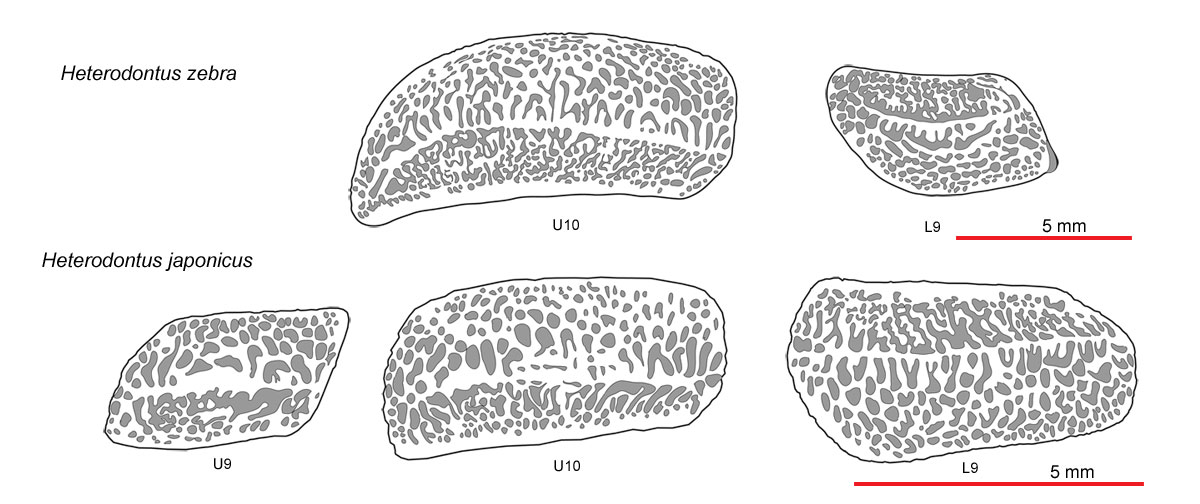| Eight species of Heterodontus live in the world and two species of them live in the sea off Japan. H. japonicus distributes widely while H. zebra is found on rare occasions in only the warmer sea. I examined the occulusal face of the teeth of these two species. As a result, I am not able to find any differences between their occulusal faces. Both are the same in pattern. There is nothing to say about contours of the teeth because my specimens are small in number. In fossil teeth, both face patterns of teeth from Kakegawa and Okinawa are almost the same and show almost the same pattern as those of the recent sharks H. japonicus and H. zebra. Teeth from the Oligocene Shiramizu group and Ashiya group are thought to be the same in pattern and apparently different from those of the modern sharks. |


| Fig. 1. Occulusal view of Heterodontus. |

| Fig. 2. Teeth Patterns of Heterodontus. |
| Pleistocene Kakegawa |

| Pliocene Okinawa |

| Oligocene Siramizu Group Akai |

| Oligocene Ashiya Group |

| Heterodontus sp. Ashiya types are found abundantly from the examined two Oligocene localities. During the Miocene of Japan, strangely enough, fossil records of the genus Heterodontus are very rare. From the Pliocene Heterodontus has become abundant again but they appear as modern Heterodontus japonicus/zebra type. In the Pliocene of Okinawa, a different type of species from those of Heterodontus japonicus/zebra can be seen. |
2020090822